 W
WThe Alexandria expedition of 1807 or Fraser expedition was an operation by the Royal Navy and the British Army during the Anglo-Turkish War (1807–1809) of the Napoleonic Wars to capture Alexandria in Egypt with the purpose of securing a base of operations against the Ottoman Empire in the Mediterranean Sea. It was a part of a larger strategy against the Ottoman-French alliance of the Ottoman Sultan Selim III. It resulted in the occupation of Alexandria from 18 March to 25 September 1807. The people of Alexandria, being disaffected towards Muhammad Ali, opened the gates of the city to the British forces, allowing for one of the easiest conquests of a city by the British forces during the Napoleonic Wars. Attempts to proceed inland however, were to prove disastrous with British troops being twice defeated in battles at Rosetta, at a cost of over 900 officers and men killed and more than 500 captured. Consequently British troops were forced to retreat to Alexandria, where they remained besieged. After further inconclusive operations against the Egyptian forces and being unable to gather supplies, the Expedition was forced to embark the transports again, and leave Alexandria, not having gained any significant position of influence in Egypt or reached any specific goals towards influencing the Ottoman Empire's improving relations with France.
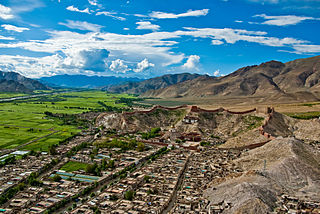 W
WBakhtiyar Khalji, the Muslim conqueror of Bengal under the Delhi Sultanate, launched a campaign to invade Tibet in the 13th century.
 W
WThe Battle of Cartagena de Indias (1586) or the Capture of Cartagena de Indias was a military and naval action fought on 9–11 February 1586, of the recently declared Anglo-Spanish War that resulted in the assault and capture by English soldiers and sailors of the Spanish city of Cartagena de Indias governed by Pedro de Bustos on the Spanish Main. The English were led by Francis Drake. The raid was part of his Great Expedition to the Spanish New World. The English soldiers then occupied the city for over two months and captured much booty along with a ransom before departing on 12 April.
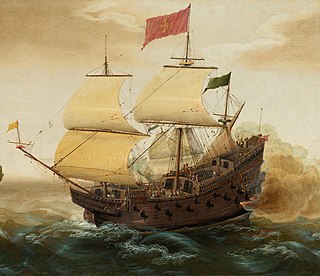 W
WThe Battle of Puerto Caballos was a military event during the Anglo–Spanish War to capture the Spanish town and port of Puerto Caballos on 17 February 1603 by an English fleet under Christopher Newport and Michael Geare. The English were able to achieve victory after a bitter fight. Two Spanish galleons were captured, one of which was subsequently burned. The Anglo-French consortium occupied the area and after two weeks withdrew with captured booty.
 W
WThe Battle of Santo Domingo (1586) or the Capture of Santo Domingo was a military and naval action fought on 1 January 1586, of the recently declared Anglo-Spanish War that resulted in the assault and capture by English soldiers and sailors of the Spanish city of Santo Domingo governed by Cristóbal de Ovalle on the Spanish island of Hispaniola. The English were led by Francis Drake and was part of his Great Expedition to raid the Spanish New World in a kind of preemptive strike. The English soldiers then occupied the city for over a month and captured much booty along with a 25,000 ducat ransom before departing on 1 February.
 W
WThe Bechuanaland Expedition or Warren Expedition, of late 1884/1885, was a British military expedition to the Tswana country, to assert British sovereignty in the face of encroachments from Germany and the Transvaal, and to suppress the Boer states of Stellaland and Goshen.
 W
WThe British expedition to Tibet, also known as the British invasion of Tibet or the Younghusband expedition to Tibet began in December 1903 and lasted until September 1904. The expedition was effectively a temporary invasion by British Indian forces under the auspices of the Tibet Frontier Commission, whose purported mission was to establish diplomatic relations and resolve the dispute over the border between Tibet and Sikkim. In the nineteenth century, the British had conquered Burma and Sikkim, with the whole southern flank of Tibet coming under the control of the British Raj. Tibet, ruled by the Dalai Lama under the Ganden Phodrang government, was the only Himalayan state under Chinese instead of British influence.
 W
WThe British Legion was a voluntary military corps composed of Englishmen and Scots, who in 1860 made their mind up to join Garibaldi during the Expedition of the thousand and fight for the unification of Italy together with the Italian Garibaldini against the Bourbon Army of the Kingdom of the Two Sicilies.
 W
WThe Cádiz expedition of 1625 was a naval expedition against Spain by English and Dutch forces. The plan was put forward because after the Dissolution of the Parliament of 1625, the Duke of Buckingham, Lord High Admiral, wanted to undertake an expedition that would match the exploits of the raiders of the Elizabethan era and in doing so, would return respect to the country and its people after the political stress of the preceding years.
 W
WThe Capture of Recife also known as James Lancaster's 1595 Expedition or Lancaster's Pernambucan expedition was an English military expedition during the Anglo–Spanish War in which the primary objective was the capture of the town and port of Recife in Pernambuco in the Portuguese colony of Brazil in April 1595. An English expedition of ships led by James Lancaster sailed via the Atlantic capturing numerous prizes before he captured Recife. He held the place for nearly a month and then proceeded to defeat a number of Portuguese counterattacks before leaving. The booty captured was substantial, Lancaster chartered Dutch and French ships that were also present there thus making the expedition a military and financial success.
 W
WThe Medieval Chola king Rajendra Chola I led an expedition to North India between 1019 and 1024. The expedition traversed the states of Vengi, Kalinga, Odda and Bengal culminating with their arrival at the Ganges river. The Chola victory over the Pala king Mahipala I is considered to be the climax of the expedition. In 1019 CE, Rajendra’s forces marched through Kalinga towards the river Ganga. In Kalinga the Chola forces defeated Indraratha the ruler of the Somavamsi Dynasty. The Chola army eventually reached the Pala kingdom of Bengal where they defeated Mahipala. The Chola army also defeated the last ruler of the Kamboja Pala dynasty Dharmapala of Dandabhukti. The Chola army went on to raid East Bengal and defeated Govindachandra of the Chandra dynasty and invaded Bastar region.
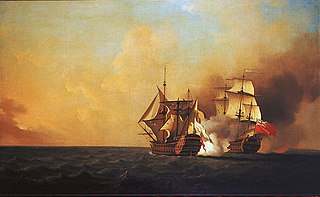 W
WThe Duc d'Anville expedition was sent from France to recapture Louisbourg and take peninsular Acadia. The expedition was the largest military force ever to set sail for the New World prior to the American Revolutionary War. This effort was the fourth and final French attempt to regain the Nova Scotian capital, Annapolis Royal, during King George's War. The Expedition was also supported on land by a force from Quebec under the command of Jean-Baptiste Nicolas Roch de Ramezay. Along with recapturing Acadia from the British, d'Anville was ordered to "consign Boston to flames, ravage New England and waste the British West Indies." News of the expedition spread fear throughout New York and New England.
 W
WThe French expedition to Ireland, known in French as the Expédition d'Irlande, was an unsuccessful attempt by the First French Republic during the French Revolutionary Wars to assist the outlawed Society of United Irishmen, a popular rebel Irish republican group, in their planned rebellion against British rule. The French intended to land a large expeditionary force in Ireland during the winter of 1796–1797 which would join with the United Irishmen and drive the British out of Ireland. The French anticipated that this would be a major blow to British morale, prestige and military effectiveness, and was also intended to possibly be the first stage of an eventual invasion of Britain itself. To this end, the Directory gathered a force of approximately 15,000 soldiers at Brest under General Lazare Hoche during late 1796, in readiness for a major landing at Bantry Bay in December.
 W
WThe Expedition of the Thousand was an event of the Italian Risorgimento that took place in 1860. A corps of volunteers led by Giuseppe Garibaldi sailed from Quarto, near Genoa and landed in Marsala, Sicily, in order to conquer the Kingdom of the Two Sicilies, ruled by the House of Bourbon-Two Sicilies.
 W
WThe Expedition of Mostaganem occurred in 1558, when Spanish forces attempted to capture the city of Mostaganem, in modern Algeria, from the Ottomans. The expedition was supposed to be a decisive step in the conquest of the Ottoman base of Algiers, but it ended in failure, and has been called a "disaster".
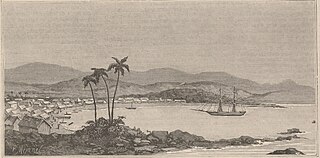 W
WThe First Madagascar expedition was the beginning of the Franco-Hova War and consisted of a French military expedition against the Merina Kingdom on the island of Madagascar in 1883. It was followed by the Second Madagascar expedition in 1895.
 W
WFrancis Drake's circumnavigation, also known as Drake's Raiding Expedition, was an important historical maritime event that took place between 15 December 1577 and 26 September 1580. Authorised by Queen Elizabeth I and led by Francis Drake; the latter sailed with five ships in what was termed a 'voyage of discovery', although in effect it was an ambitious covert raiding voyage and the start of England's challenge to Spain's global domination.
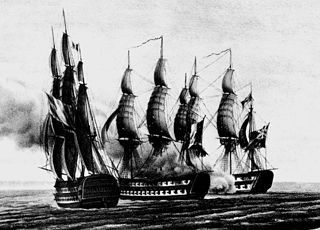 W
WGanteaume's expeditions of 1801 were three connected major French Navy operations of the spring of 1801 during the French Revolutionary Wars. A French naval squadron from Brest under Contre-amiral Honoré Ganteaume, seeking to reinforce the besieged French garrison in Egypt, made three separate but futile efforts to reach the Eastern Mediterranean. The French army in Egypt had been trapped there shortly after the start of the Napoleonic campaign in Egypt in 1798, when the French Mediterranean Fleet was destroyed at the Battle of the Nile. Since that defeat, the French Navy had maintained only a minimal presence in the Mediterranean Sea, while the more numerous British and their allies had succeeded in blockading and defeating several French bases almost unopposed.
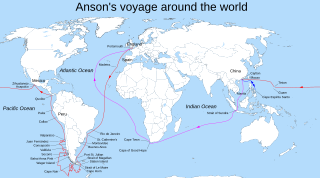 W
WWhile Great Britain was at war with Spain in 1740, Commodore George Anson led a squadron of eight ships on a mission to disrupt or capture Spain's Pacific possessions. Returning to Britain in 1744 by way of China and thus completing a circumnavigation, the voyage was notable for the capture of an Acapulco galleon but also horrific losses to disease with only 188 men of the original 1,854 surviving.
 W
WThe German Caucasus expedition was a military expedition sent in late May 1918, by the German Empire to the formerly Russian Transcaucasia during the Caucasus Campaign of World War I. Its prime aim was to stabilize the pro-German Democratic Republic of Georgia and to secure oil supplies for Germany by preventing the Ottoman Empire from gaining access to the oil reserves near Baku on the Abşeron peninsula.
 W
WThe Hudson Bay expedition of 1686 was one of the Anglo-French conflicts on Hudson Bay. It was the first of several expeditions sent from New France against the trading outposts of the Hudson's Bay Company in the southern reaches of Hudson Bay. Led by the Chevalier de Troyes, the expedition captured the outposts at Moose Factory, Rupert House, Fort Albany, and the company ship Craven.
 W
WThe Invasion of Dominica was a British military expedition to capture the Caribbean island of Dominica in June 1761, as part of the Seven Years' War.
 W
WJohn's First Expedition to Ireland refers to a visit to the Island of Ireland by John Plantagenet as part of a campaign to secure the influence of the House of Plantaganet and the Crown of England, who planned to set up a Kingdom of Ireland within the Angevin Empire. John was himself a future King of England, the son of Henry II of England and had been declared Lord of Ireland by his father at the Council of Oxford in 1177. Despite his own ambitions for the Kingdom of Jerusalem, John Lackland was sent west to Ireland by his father and landed at Waterford in April 1185.
 W
WAs Antarctica has never been permanently settled by humans there has historically been little military activity in the Antarctic. Because the Antarctic Treaty, which came into effect on June 23, 1961, bans military activity in Antarctica, military personnel and equipment may only be used for scientific research or any other peaceful purpose on the continent.
 W
WThe Morea expedition is the name given to the land intervention of the French Army in the Peloponnese between 1828 and 1833, at the time of the Greek War of Independence, with the aim of expelling from the region the Ottoman-Egyptian occupation forces. It was also accompanied by a scientific expedition mandated by the French Academy.
 W
WThe Newfoundland expedition was a series of fleet manoeuvres and amphibious landings in the coasts of Newfoundland, Labrador and Saint Pierre and Miquelon carried out by the combined French and Spanish fleets during the French Revolutionary Wars. This expedition, composed of seven ships of the line and three frigates under the orders of Rear-Admiral Richery sailed from Cadiz in August 1796 accompanied by a much stronger Spanish squadron, commanded by General Solano, which had the aim of escorting it to the coast of Newfoundland.
 W
WThe Newfoundland expedition was a naval raiding expedition led by English Captain John Leake between August and October 1702 that targeted French colonial settlements on the North Atlantic island of Newfoundland and its satellite Saint Pierre. The expedition occurred in the early days of Queen Anne's War, as the North American theater of the War of the Spanish Succession is sometimes known.
 W
WThe Nile Expedition, sometimes called the Gordon Relief Expedition (1884–85), was a British mission to relieve Major-General Charles George Gordon at Khartoum, Sudan. Gordon had been sent to the Sudan to help Egyptians evacuate from Sudan after Britain decided to abandon the country in the face of a rebellion led by self-proclaimed Mahdi, Mahommed Ahmed. A contingent of Canadians was recruited to help the British navigate their small boats up the Nile River. The Nile Expedition was the first overseas expedition by Canadians in a British imperial conflict, although the Nile Voyageurs were civilian employees and did not wear uniforms.
 W
WThe Quebec Expedition, or the Walker Expedition to Quebec, was a British attempt to attack Quebec in 1711 in Queen Anne's War, the North American theatre of the War of Spanish Succession. It failed when seven transports and one storeship were wrecked and some 850 soldiers drowned in one of the worst naval disasters in British history.
 W
WThe Raid on St. Augustine was a military event during the Anglo-Spanish War in which the Spanish settlement of St. Augustine in Florida ) was captured in a small fight and burnt by an English expedition fleet led by Francis Drake. This was part of Francis Drake's Great Expedition and was his last engagement on the Spanish Main before Drake headed north for the Roanoke Colony. The expedition also forced the Spanish to abandon any settlements and forts in present-day South Carolina.
 W
WRaleigh's El Dorado expedition, also known as Raleigh's first voyage to Guiana, was an English military and exploratory expedition led by Sir Walter Raleigh that took place during the Anglo-Spanish War in 1595. The expedition set out in February 1595 to explore the Orinoco River on the northeast tip of South America in an attempt to find the fabled city of El Dorado.
 W
WRoquebert's expedition to the Caribbean, was an unsuccessful operation by a French naval squadron to transport supplies to Guadeloupe in December 1809 at the height of the Napoleonic Wars. Over the previous year, British Royal Navy squadrons had isolated and defeated the French Caribbean colonies one by one, until by the autumn Guadeloupe was the only colony remaining in French hands. Cut off from the rest of the world by British blockade squadrons that intercepted all ships coming to or from the island, Guadeloupe was in a desperate situation, facing economic collapse, food shortages and social upheaval, as well as the impending threat of British invasion. In an effort to reinforce and resupply the colony, the French government sent four vessels to the West Indies in November 1809 under Commodore François Roquebert. Two of the ships were 20-gun flûtes carrying supplies and troops. The two others were 40-gun frigates, ordered to protect the storeships on their journey from the British forces operating off both the French and Guadeloupe coasts.
 W
WThe Saint-Domingue expedition was a French military expedition sent by Napoleon Bonaparte, then First Consul, under his brother-in-law Charles Victor Emmanuel Leclerc in an attempt to regain French control of the Caribbean colony of Saint-Domingue on the island of Hispaniola, and curtail the measures of independence taken by the former slave Toussaint Louverture. It landed in December 1801 and, after initial success, ended in a French defeat at the battle of Vertières and the departure of French troops in December 1803. The defeat ended forever Napoleon's dreams of a French empire in the West.
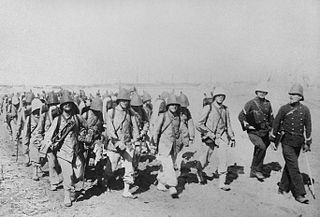 W
WThe Second Madagascar expedition was a French military intervention which took place in 1894–95, sealing the conquest of the Merina Kingdom on the island of Madagascar by France. It was the last phase of the Franco-Hova War and followed the First Madagascar expedition of 1883–85.
 W
WThe Sikkim expedition was an 1888 British military expedition to expel Tibetan forces from Sikkim in present-day north east India. The roots of the conflict lay in British-Tibetan competition for sovereignty over Sikkim.
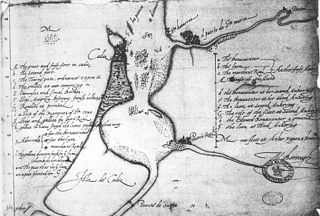 W
WSingeing the King of Spain's Beard is the derisive name given to a series of attacks by the English privateer Francis Drake against the Spanish in the summer of 1587, beginning in April with a raid on Cádiz. This was an attack on the Spanish naval forces assembling in the Bay of Cádiz in preparation for the planned expedition against England. Much of the Spanish fleet was destroyed, and substantial supplies were destroyed or captured. There followed a series of raiding parties against several forts along the Portuguese coast. A Spanish treasure ship, returning from the Indies, was also captured. The damage caused by the English delayed Spanish preparations for the Armada by more than a year.
 W
WThe Villasur expedition of 1720 was a Spanish military expedition intended to check New France's growing influence on the North American Great Plains, led by Lieutenant-General Pedro de Villasur. Pawnee and Otoe Indians attacked the expedition in Nebraska, killing 36 of the 40 Spaniards, 10 of their Indian allies, and a French guide. The survivors retreated to their base in New Mexico.
 W
WWatts' West Indies and Virginia expedition also known as the Action of Cape Tiburon was an English expedition to the Spanish Main during the Anglo–Spanish War. The expedition began on 10 May and ended by 18 July 1590 and was commanded by Abraham Cocke and Christopher Newport. This was financed by the highly renowned London merchant John Watts. The English ships intercepted and dispersed Spanish convoys capturing, sinking, and grounding many ships off the Spanish colonies of Hispaniola, Cuba, and Jamaica. Despite losing an arm, Newport was victorious and captured a good haul of booty. A breakaway expedition from this discovered that the Roanoke colony was completely deserted and which gave the name The Lost Colony.